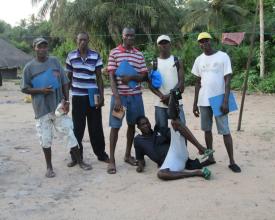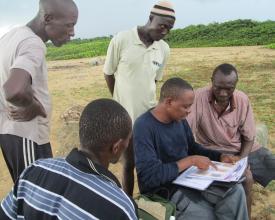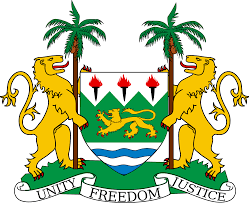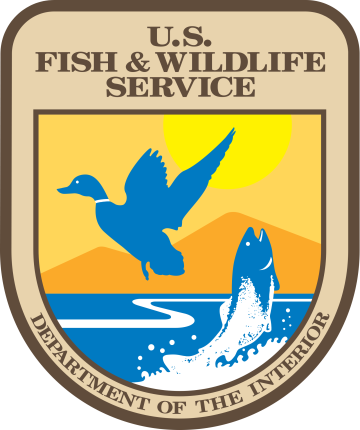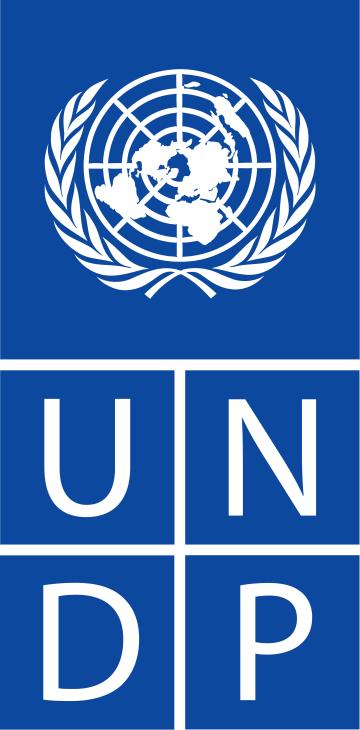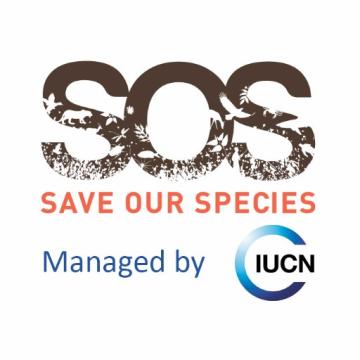
Development of a community-based marine turtle conservation program
Full Solution
Releasing captured turtles.
E. Aruna, Reptile and Amphibian Program – Sierra Leone
This solution addresses the killing of sea turtles, egg poaching and the unawareness on their importance in Sierra Leone. To reduce the killing of turtles, local fishermen receive materials to repair nets destroyed by turtle entanglements. Additionally, locals are supporting the surveillance of nesting beaches and by-catch. To raise awareness towards the importance of biodiversity, education materials are produced and distributed during seminars and workshops held with community leaders.
Last update: 09 Nov 2021
7012 Views
Context
Challenges addressed
Marine turtle species in Sierra Leone are facing threats including accidental by-catch, sand mining, ornamental use of carapaces, consumption of meat and eggs as sources of protein, construction at nesting sites, loss of nesting beaches to erosion, weak laws protecting wildlife, unawareness about the wildlife laws and insufficient education/sensitization about threatened and endangered species.
Location
Freetown, Western Area, Sierra Leone
West and Central Africa
Process
Summary of the process
1. Community involvement in data collection has helped in stopping or moderating the killing of turtles and the poaching of turtle eggs, provided information on the number of turtles captured in the artisanal fisheries, species that are mostly caught, species that nest on beaches in Sierra Leone and the rate at which the species are caught or nest on beaches. It has also helped in building the data collecting capacity of Monitors.
2. Information and communication of biodiversity matters has helped to raise the awareness of locals about biodiversity matters, in which locals have learned or known about endangered species and laws protecting them. This awareness has contributed to the protection of turtles. In most communities locals no longer kill or collect turtle eggs.
3. Communication, outreach and awareness: results of community meetings with the involvement of government personnel and staff of other NGOs have helped in the dissemination of conservation messages or information to the various coastal communities. The disseminated messages have contributed to the non-killing and collection of turtles eggs and helped raised the general awareness of locals.
Building Blocks
Community involvement in data collection
The Reptile and Amphibian Program – Sierra Leone (RAP-SL) identifies and trains locals in data collection. Once trained, they are provided with waterproof files, pencils, data sheets, measuring tapes, tags and applicators (a sort of plier used to apply tags onto turtle flippers) to conduct nesting beach monitoring for six months (November to April). The hired monitors monitor the nests until hatching takes place. The day the hatchlings emerge, the monitors count those they find on the beach and watch them go into the water. Another group of trained locals conduct bycatch monitoring for 12 months in fishing communities. They measure the captured turtles (length and width), tag and release them again if they are alive. If the captured turtle is dead, the turtle will be buried. At the end of the year, data collected from the field is fed into RAP-SL’s database. The main purpose of this building block is to collect data on nesting turtles in order to identify the turtle species that nest on beaches, and also to collect data on turtle captured in fishing nets in Sierra Leone.
Enabling factors
The success of this building block hinges on the quality of training given to locals about the data collection exercise, the regular payment of stipend to monitors and the level of assistance given to communities through community development programs.
Lesson learned
• Regular training of monitors: it has been observed that regular training of monitors helps in quality data collection and raising the awareness of monitors in addressing questions raised by locals during their tasks. • Payment of stipend: the payment of stipend to monitors helps in motivation the youths in performing the required task • Community development: experience shows that undertaking community development programs within coastal communities will establish goodwill upon which to build interest in conservation programs. It is preferable to demonstrate benefits broadly to the community rather than payment schemes to individual fishermen for services such as collecting data on released turtles. For community development, the aspect that has not work is microcredits and financing community businesses. In most cases some locals deliberately fail to payback moneys to the community support or finances. In many cases, this idea leads to disputes that may negatively impact projects.
Resources
Marine turtle conservation
Ongoing projects
Community involvement in biodiversity protection
Capacity development activities include:
• Training of locals in data collection: This includes the training of monitors in using monitoring tools including digital cameras, GPS, measuring tapes, filling of monitoring forms.
• Awareness raising: Conducting workshops and seminars during which locals are provided the appropriate information/education about the need for conserving the country’s biodiversity and the benefit they will derive from conserving their resources.
• Payment of stipend: The stipends paid to monitor help to enable them meet some of their daily needs at their various homes.
Enabling factors
• Identifying appropriate locals for the training: recruitment based on interest in the conservation effort.
• Providing the appropriate training: includes the use of monitoring tools, completing monitoring forms and the provision of brochures.
• Regular checking of the forms: helps in correcting mistakes and indicate the importance of the forms.
• Awareness raising materials: motivates community.
• Timely payment of stipends: encourages monitors and guarantees their effort is been awarded.
Lesson learned
• It has been observed that dealing with locals that are willing to work on your project will help facilitate the achievement of the goals of the project.
• Producing and distributing the appropriate awareness raising materials on a timely manner will help the awareness raising process. Materials RAP-SL has produced in the past include brochures, t-shirts, billboards, calendars.
Resources
Marine turtle conservation
Information and communication of biodiversity matters
Appropriate information and communication tools such as t-shirts, posters, calendars, billboard as well as brochures and flyers are distributed to educate and sensitize the local communities about the importance of biodiversity and especially, raise awareness for turtle conservation. In regular community meetings and seminars, detailed information is shared and community members are engaged in the program’s activities, which is believed to be creating the feeling of local ownership.
Enabling factors
• Appropriate outreach materials help to facilitate the process.
• Involvement of legitimate authorities in the awareness raising efforts. They may include staff from the respective ministries, NGOs and other institutions that will provide the accurate messages about the biodiversity matters in the country.
• Conducting meetings, seminars and workshops with the targeted community members, during which the materials are distributed.
• Readiness of the funding for the activities is important.
Lesson learned
• Appropriate awareness raising materials help achieve the desired goal. Locals have always welcomed the distribution of education materials like calendars, t-shirts, billboards and brochures during meetings.
• The presence of staff from government ministries, other NGOs and institutions in meetings helps to communicate the importance of the conservation effort
• Conducting meetings that bring together community members helps to facilitate the awareness raising process much more than individual meetings and talks, though these also help in some ways at times.
• The more funding available enables the production of more materials and catering for more community members during gatherings.
Resources
Education and sensitization
Impacts
The involvement of locals in data collection and their participation in awareness raising activities results in a higher consciousness in most communities about sea turtles. Once locals see or capture a turtle, they report to the beach or bycatch monitors for the collection of data. Data collected may include turtle species, length, breadth and tag number. Once the data is collected the turtle will be released if it is alive. If the animal is dead, community members help in burying it since there is a local law prohibiting the killing of turtles. The surveillance of nesting beaches has helped in controlling the poaching of eggs and resulted in increasing numbers of turtle offspring (hatchlings) released. The provision of rolls of threads to fishers whose nets are torn by turtles, payment of stipends to turtle-observers (mainly youths) and fishers from the local communities as well as implementing community development projects that address the general needs of the communities have also contributed to the sea turtle conservation efforts. The production of education material with a focus on conservation and the installation of billboards with information and photos have helped to raise awareness among locals.
Beneficiaries
The protection and conservation of the five marine turtle species including the green turtle, hawksbill, olive ridley, leatherback and loggerhead, that occur in Sierra Leone.
Story
In Sierra Leone, five marine turtle species are known to occur in the country’s Atlantic coast. The five species include the leatherback, olive ridley, green turtle, loggerhead and hawksbill. All five have been recorded to nest on beaches in Sierra Leone. Leatherbacks are known to nest on beaches in the Turtle and Sherbro Islands, and the Turners Peninsula. The Sherbro Island beach is about 52 km and continues to host the largest population of nesting leatherbacks in Sierra Leone based past nest monitoring results. For the monitoring of nesting beaches and bycatches, the marine turtle conservation effort hires locals from the coastal communities annually. Presently, the Reptile and Amphibian Program – Sierra Leone (RAP-SL) is engaging more than 54 monitors that conduct nesting beach and bycatch monitoring along selected coastal communities. Since 2008, the marine turtle conservation program in Sierra Leone has recorded a total of 750 marine turtle nests on beaches so far monitored. These nests resulted in the release of about 38,118 hatchlings while the bycatch monitoring has recorded around 1,000 turtles. Sierra Leone has well over 70 major coastal settlements. Fishing is the main activity of coastal communities and about 90% of the estimated 6 million people rely on coastal fisheries for protein supplies. The influx of foreign vessels and other fishers who export about 90% of their catch has impacted the country’s fish stock. This situation, in addition to the limited education/sensitization about laws (both national and international) protecting endangered species and their habitats as well as the non-enforcement of laws have resulted in the exploitation of marine turtles and many other threatened/endangered species within coastal areas that are not covered by the marine turtle conservation effort in Sierra Leone. However, the involvement of locals has been considered as a key factor for conservation success. The community development activities have included the provision of water supply facility for nine island and some main land communities, construction of schools and community centers, supplying of school materials to schools, and assisting students with fees; providing solar electricity in two primary schools and supplying then computers and solar lanterns.These activities have shown that collaborations with the coastal communities and fishers will not only minimize threats faced by marine turtles but also enhance marine turtle data collection.
